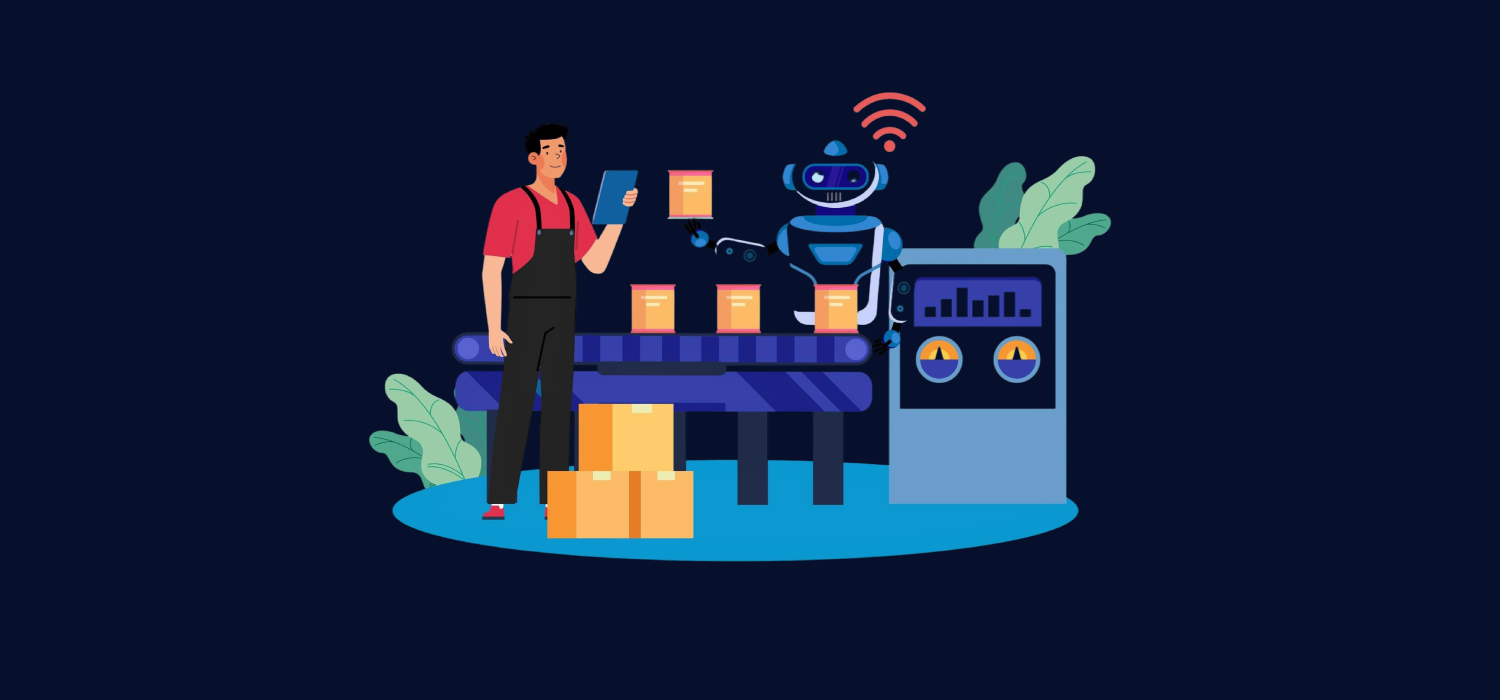What is RPA and Why Should Retail Businesses in USA, UK, and Australia Adopt It?
Robotic Process Automation (RPA) is software that automates repetitive tasks by copying human actions across systems. For retail businesses in USA, UK, and Australia, RPA tackles operational challenges without requiring costly system overhauls.
It integrates with existing platforms, enabling retailers to streamline processes such as data entry, inventory tracking, and order processing, freeing staff for strategic roles.
Each country faces unique retail dynamics—high-volume markets in the USA, post-Brexit trade complexities in the UK, and vast geographic spread in Australia. RPA for retail businesses will enhance efficiency, reduce errors, and adapt to these regional nuances.
Among global retail companies, interest in RPA rose approximately 52% from 2021 to 2022. (Global Data)
How Does RPA Transform Inventory Management for Retailers?
Inventory management is critical in retail, and RPA in retail simplifies it by automating stock oversight and replenishment.
- Real-Time Stock Updates: Bots monitor stock levels across warehouses and stores, pulling data from multiple sources to provide accurate and up-to-date information.
- Automated Reordering: RPA triggers purchase orders when stocks hit predefined thresholds.
- Return Handling: Bots log returns and update inventory, reducing manual errors.
USA: Streamlining High-Volume Inventory
Retail businesses in USA manage sprawling supply chains across states. RPA automates inventory tracking across multiple locations, ensuring retail chains avoid stockouts during peak shopping periods. It also syncs with e-commerce platforms, aligning online and in-store inventories for seamless omnichannel experiences.
UK: Navigating Post-Brexit Inventory Challenges
UK retailers face import delays and customs complexities. RPA monitors stock movements across borders, updating systems with tariff codes and supplier data. This reduces delays in restocking and ensures compliance with new trade rules, helping boutique stores and chains alike stay agile.
Australia: Managing Geographically Dispersed Inventory
Australia’s vast geography makes inventory coordination challenging. RPA centralizes data from remote stores and warehouses, automating stock allocation to prevent overstock in urban hubs while ensuring rural outlets remain supplied. It also adjusts for seasonal demand spikes, like holiday rushes.
RPA in retail is projected to touch USD 6.10 billion by 2027 at a CAGR of ~24.9%
In What Ways Does RPA Enhance Customer Service in Retail and E-commerce?
RPA in retail and e-commerce improves customer interactions by automating backend tasks, allowing staff to focus on engagement.
- Automated Query Handling: Bots resolve common questions, accessing customer data for quick responses.
- Personalized Marketing: RPA analyzes purchase histories to tailor promotions across channels.
- Feedback Automation: Bots send and compile post-purchase surveys, streamlining insights.
USA: Scaling Customer Service for Competitive Markets
In the USA’s crowded retail space, RPA enables rapid response to customer inquiries via chatbots, ensuring 24/7 support for online shoppers. It also powers personalized recommendations, boosting sales in e-commerce giants and smaller retailers alike.
UK: Enhancing Boutique Customer Experiences
UK’s retail scene includes many independent stores. RPA automates routine tasks like order confirmations, allowing staff to focus on crafting personalized in-store experiences. It also ensures consistent service across online and physical channels, vital for customer loyalty.
Australia: Bridging Urban-Rural Customer Gaps
With customers spread across urban centers and remote areas, Australian retailers use RPA to unify service. Bots handle order updates and delivery tracking, ensuring rural customers receive timely communication, matching the experience of city shoppers.
How Can RPA Optimize Supply Chain Operations?
Supply chains involve complex coordination, and RPA simplifies vendor and logistics tasks.
- Vendor Syncing: Bots verify invoices and flag discrepancies, streamlining payments.
- Shipment Tracking: RPA updates delivery statuses across carriers, reducing manual checks.
- Demand Planning: Bots analyze sales trends to forecast supply needs accurately.
USA: Managing Domestic Supply Networks
The USA’s extensive logistics networks benefit from RPA’s ability to track shipments across states, ensuring timely deliveries for large retailers. It also automates vendor negotiations, reducing costs in competitive markets.
UK: Tackling EU Trade Complexities
Post-Brexit, UK retailers rely on RPA to manage customs documentation and track cross-border shipments. This minimizes delays and ensures compliance, critical for mid-sized retailers dependent on European suppliers.
Australia: Overcoming Long-Haul Supply Challenges
Australia’s reliance on international imports makes RPA vital for tracking long-haul shipments. Bots coordinate with global suppliers, ensuring stock arrives on time despite geographic isolation, benefiting both urban and remote retailers.

What Role Does RPA Play in Financial Processes?
RPA automates financial tasks, ensuring accuracy and compliance.
- Invoice Automation: Bots extract and match invoice data, speeding up approvals.
- Expense Monitoring: RPA categorizes costs, simplifying budgeting.
- Payment Scheduling: Bots execute timely vendor payments, maintaining relationships.
USA: Handling Multi-State Tax Compliance
Retail businesses in USA navigate varied state tax laws. RPA automates tax calculations and filings, reducing errors for chains operating nationwide.
UK: Streamlining VAT Reconciliation
UK retailers use RPA to manage VAT compliance, automating calculations and filings to meet HMRC requirements, saving time for small and large businesses.
Australia: Simplifying GST Processes
RPA ensures Australian retailers comply with GST regulations by automating tax data collection and reporting, which is critical for businesses with high transaction volumes.
FAQs
What makes RPA affordable for small retail businesses in the USA, UK, and Australia?
RPA scales to fit small budgets, starting with simple tasks like email automation, requiring minimal IT investment.
How does RPA integrate with retail e-commerce platforms?
It connects with platforms like WooCommerce or BigCommerce, automating order syncing and customer data updates.
Is RPA secure for handling retail customer data?
Yes, bots encrypt sensitive data and log actions, ensuring compliance with privacy laws like GDPR or CCPA.
Can RPA benefit both online and brick-and-mortar retail?
Absolutely, it automates in-store tasks like stock checks and online tasks like order processing, benefiting both formats.
How should retailers start with RPA implementation?
Identify repetitive tasks, choose an RPA tool with easy integration, and pilot it in one area, like inventory before scaling up.

 contact
contact

 By
By 


